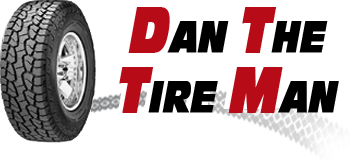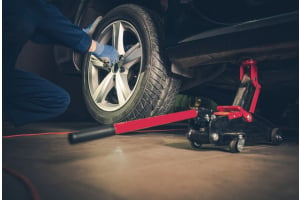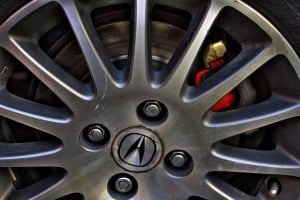
If you’ve ever changed a tire at home, swapped between winter and summer tires, or taken your wheels off for brake work, then you’ve had to tighten the lug nuts back on. Seems simple enough: twist until it feels snug, right?
Well… not exactly.
Tightening wheel lug nuts correctly is one of those small details that makes a huge difference. When it’s done the right way, your wheels stay secure, your brakes behave the way they’re supposed to, and your ride feels smooth. When it’s done wrong? That’s when things get sketchy — wheels can loosen up, rotors can warp, studs can break, and you can end up with dangerous driving conditions.
The good news? Learning to torque your lug nuts properly is not hard at all. You just need to know why it matters, how to find the right torque spec, and the right method to tighten them. Let’s break it down in real-person language, no complicated mechanic jargon.
So… What Does “Torque” Even Mean?
Torque just refers to tightening force, measured in foot-pounds (ft-lb) or Newton meters (Nm) depending on your tool. When you tighten your lug nuts, you’re basically clamping the wheel to the hub. The key here is that each lug nut needs to be tightened evenly and to a specific amount of force.
Why? Because:
- If you tighten lug nuts too much, you can damage the studs or make the brakes act weird.
- If you tighten them too little, the wheel can wiggle loose while you’re driving.
And yes, wheels have come off moving cars for exactly this reason.
So torque specs exist to tell you exactly how tight your lug nuts should be — not too loose, not Hulk-smash tight, just right.
Most vehicles fall somewhere in the 80–120 ft-lb range, but it really depends on your specific car or truck.
How to Find Your Vehicle’s Torque Spec
The torque spec varies based on:
- Your vehicle’s make/model
- The type of wheels you have (steel or aluminum)
- The size and shape of the lug nuts
Here’s where to look:
- Your owner’s manual (usually in the wheels/tires section)
- The manufacturer’s website
- A reliable torque reference chart
- Calling your dealership or tire shop
IMPORTANT: Don’t just guess
Guessing is how studs get snapped, rotors get warped, or wheels get loose. The correct number matters.
Tools You’ll Need
You don’t need a full mechanic’s shop — just a few basics:
| Tool | What It Does |
|---|---|
| Torque wrench | Measures tightening force accurately |
| Socket that fits your lug nuts | Usually 17mm, 19mm, or 21mm, but varies |
| Breaker bar (optional) | Helps loosen tight lug nuts |
| Car jack + jack stands | To lift and safely support the vehicle |
| Wire brush (optional) | To clean rust or dirt on hub surfaces |
Note: Your car’s emergency scissor jack is fine for roadside use, but for home work, a shop jack and stands are much safer.
Step-by-Step: How to Properly Torque Your Lug Nuts
Here’s the simple method — no stress, no confusion.
1. Make sure the wheel and hub surfaces are clean
If there’s rust, dirt, or corrosion, the wheel might not seat flat.
A quick scrub with a wire brush works wonders.
2. Hand-thread your lug nuts
This is important — always start them by hand.
This prevents cross-threading, which is a nightmare to fix later.
3. Snug them just a little
Use your socket and wrench to snug each lug nut until the wheel sits flush. Not tight — just snug.
4. Tighten in a star or criss-cross pattern
This helps the wheel center itself evenly.
Example pattern for a 5-lug wheel:
1 → 3 → 5 → 2 → 4
Don’t go around in a circle — that can force the wheel to sit crooked.
5. Lower the car so the wheel touches the ground but isn’t fully weighted
This keeps the wheel from spinning while tightening.
6. Set your torque wrench to the correct spec
Match the exact number, don’t “round up” or “do a little extra just in case.”
7. Tighten each lug nut slowly and smoothly
Press the torque wrench until it clicks.
That click means: Stop. You’re done.
8. Re-check after driving about 50–100 miles
This step gets skipped a lot — don’t skip it.
Wheels settle over time, especially after being removed.
Why the Star Pattern Matters
If you tighten one lug nut too much before the others are snug, the wheel can tilt slightly against the hub. This leads to:
- Vibration while driving
- Uneven rotor pressure (which can cause brake pulsation)
- Wheel studs weakening over time
The star pattern ensures:
- Even pressure
- Proper seating
- A balanced ride
It’s simple and it matters.
Mistakes to Avoid (These Happen All the Time)
| Mistake | Why It’s a Problem |
|---|---|
| Using an impact gun to fully tighten | Impacts can easily over-tighten or strip studs |
| Not re-torquing wheels after a few miles | Lug nuts can loosen slightly as parts settle |
| Adding oil, grease, or anti-seize to threads | Causes over-tightening and stud failure |
| Guessing torque “by feel” | Even experienced techs can be way off |
| Tightening lug nuts in a circle pattern | Can warp rotors or leave the wheel misaligned |
Impact guns are great for loosening and initial snugging, but not for final tightening.
Why Proper Torque Makes Driving Feel Better
Getting the torque right doesn’t just keep your wheels safe — it also affects:
- Brake performance
Uneven torque can cause the brake rotor to warp slightly, leading to that pulsing feeling in the pedal. - Ride comfort
Incorrect torque can cause vibration, especially at highway speeds. - Wheel longevity
Wheels that aren’t seated properly can get damaged over time.
Think of proper torque as “cheap insurance” for your wheels, brakes, and safety.
How Often Should You Check Torque?
Check or re-torque when:
- You’ve just had your wheels removed for any reason
- You hit a big pothole or curb
- You switch between winter and summer tires
- You feel vibration while driving
- You’re preparing for a long trip
A quick torque check can take less than a minute — and it could prevent a big problem later.
If You Take Your Car to a Shop… Still Re-Torque
Most shops use impact tools to speed up the job. They’ll finish the job with a torque wrench, but lug nuts may still settle over the next few miles. So:
Drive 50–100 miles, then re-check.
It’s not about correcting the shop, it’s just good practice.
Tightening lug nuts properly might not seem like a big deal, but it’s truly one of those small things that makes a huge difference. It protects your wheels, keeps your brakes feeling smooth, and most importantly, keeps you safe.
Once you get the hang of using a torque wrench and the star pattern, it becomes second nature and you’ll never want to go back to guessing.
A few minutes of careful tightening today can save you from a very bad day on the road tomorrow.





